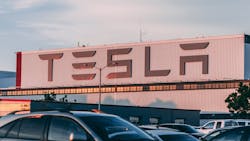Tesla Revises Inaccurate Range Estimates in Response to New EPA Rules
New rules from the Environmental Protection Agency (EPA) that will require more accurate estimates from EV manufacturers on their driving ranges have prompted Tesla to lower advertised driving ranges for many of its models, Reuters reports.
In a letter sent out to automakers in July 2022, the EPA said that EVs must be tested for driving range and fuel efficiency in their default driving mode. For vehicles that don’t come with different driving settings, the best and worst-performing models must be tested to aggregate an average driving range. These new rules have taken effect for all 2024 model vehicles.
With a lack of charging infrastructure being one of the biggest obstacles to EV adoption, Tesla has been criticized for providing inaccurate numbers for the driving range of its vehicles. Reuters reported in July that Tesla had manipulated its in-dash range estimates to be higher than what it was and that the automaker had been working to silence and dismiss complaints about its driving ranges.
In response, Tesla has lowered the range estimates for certain variants of its Model X, S, Y, and 3 vehicles. The Model Y Long Range dropped from 330 miles to 310; the Model Y went from 303 to 285; and the Model S Plaid dropped from 396 to a whopping 359 miles of range.
When auto website Edmunds tested a variety of EVs from different manufacturers to compare the advertised range with actual performance, most of them exceeded expectations. However, all eight of the Tesla vehicles tested were found to perform worse than any of their proposed range estimates that were provided to the EPA.
According to Recurrent Chief Executive Scott Case, Tesla’s previous range estimates have been 30% or more higher than what they actually could perform. Case describes the lowering of range estimates to be “a step in the right direction.”
